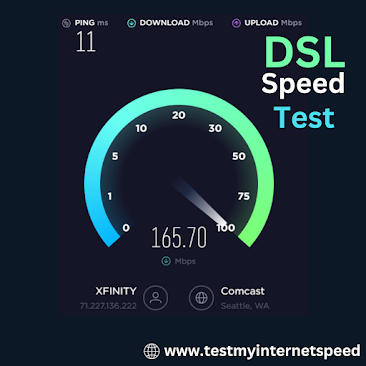The Ultimate Guide to Passing Your DSL Speed Test
Introduction:
In today's fast-paced digital age, a reliable and high-speed internet connection is essential for various online activities, from streaming movies and music to gaming and remote work. If you're using a DSL (Digital Subscriber Line) connection, ensuring optimal performance is crucial. One effective way to gauge your DSL connection's speed is through a speed test. This guide aims to provide you with a comprehensive overview of how to pass your DSL speed test with flying colors.
Understanding DSL Speed:
DSL is a popular broadband internet technology that utilizes existing telephone lines to transmit digital data. Unlike traditional dial-up connections, DSL offers higher speeds and constant connectivity. The speed of your DSL connection is measured in megabits per second (Mbps), with higher Mbps values indicating faster download and upload speeds.Choosing the Right Speed Test Tool:
Before diving into the world of DSL speed tests, it's essential to choose the right tool for the job. Several online platforms offer free and reliable speed tests, such as Ookla's Speedtest, Fast.com by Netflix, and SpeedOf.Me. Ensure that your chosen tool is reputable and provides accurate results.Pre-Test Preparation:
To obtain the most accurate results during your DSL Speed Test, take a few minutes to prepare your environment. Close any unnecessary applications or background processes on your devices to free up bandwidth. Disconnect any other devices connected to the internet to minimize network congestion during the test.Connecting Directly to the Modem:
For the most accurate results, connect your computer directly to the DSL modem using an Ethernet cable. This eliminates potential interference from Wi-Fi signals and provides a direct measurement of your DSL connection speed. If a direct connection isn't possible, ensure that you are as close to the modem as possible to minimize signal loss.Conducting the Speed Test:
Once you've prepared your environment, visit your chosen speed test website and initiate the test. Most speed test tools measure download speed, upload speed, and ping (latency). The download speed represents how quickly data can be transferred from the internet to your device, while the upload speed measures the opposite – the rate at which data is sent from your device to the internet. Ping, or latency, indicates the time it takes for data to travel from your device to the server and back.Interpreting Results:
After completing the speed test, carefully examine the results. Compare your download and upload speeds with the service plan provided by your DSL provider. If the results match or exceed the expected speeds, congratulations – your DSL connection is performing well. If the speeds are consistently lower than expected, it's time to troubleshoot.Troubleshooting Slow DSL Speeds:
If your DSL Speed Test results are not up to par, consider the following troubleshooting steps:Check for Network Congestion:
- Identify peak usage times and schedule bandwidth-intensive activities during off-peak hours.
- Upgrade your DSL plan for higher speeds if network congestion is a recurrent issue.
Inspect Wiring and Connections:
- Ensure all cables and connections are secure and free of damage.
- Replace old or damaged cables to improve signal quality.
Contact Your DSL Provider:
- Reach out to your DSL provider's customer support for assistance.
- Inquire about potential service issues or upgrades available in your area.
Consider Equipment Upgrades:
- Upgrade your DSL modem to a newer model that supports higher speeds.
- Explore the possibility of switching to a different type of broadband connection if DSL speeds do not meet your needs.




Comments
Post a Comment